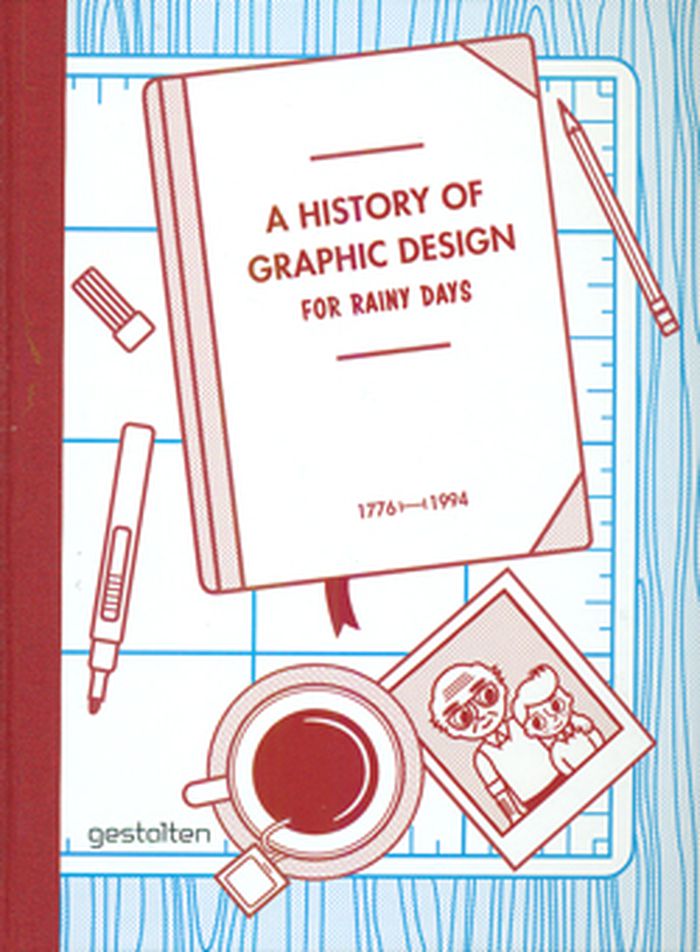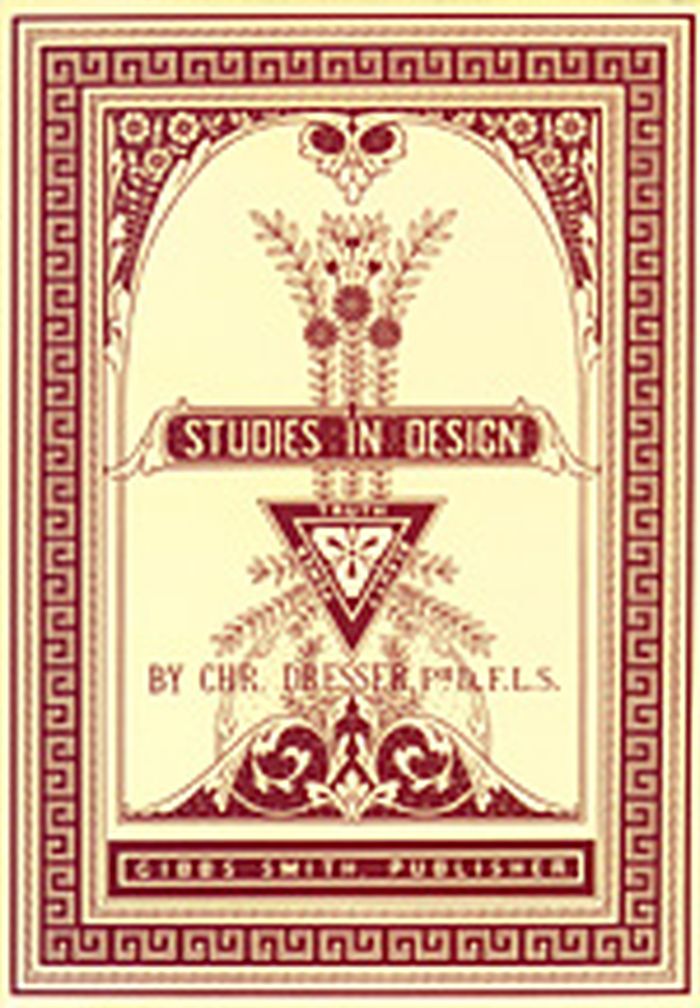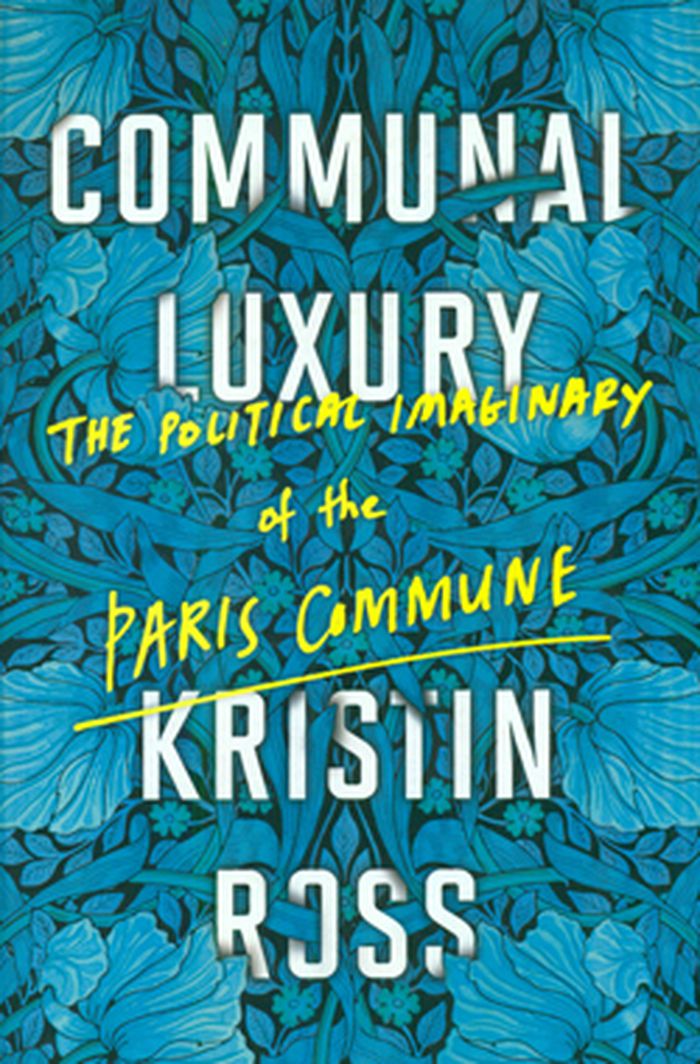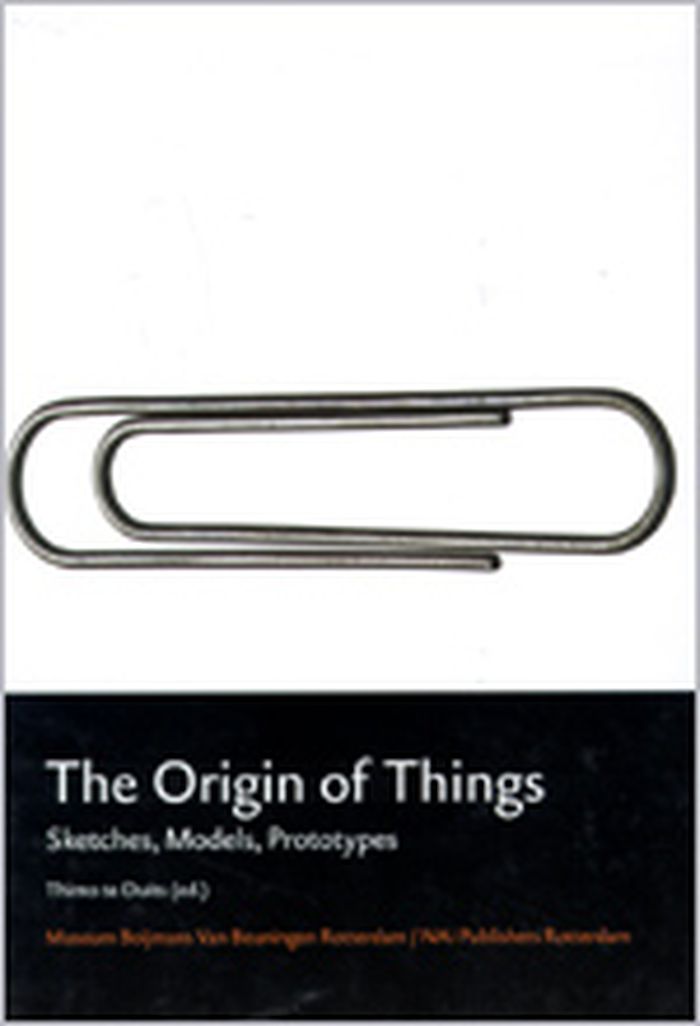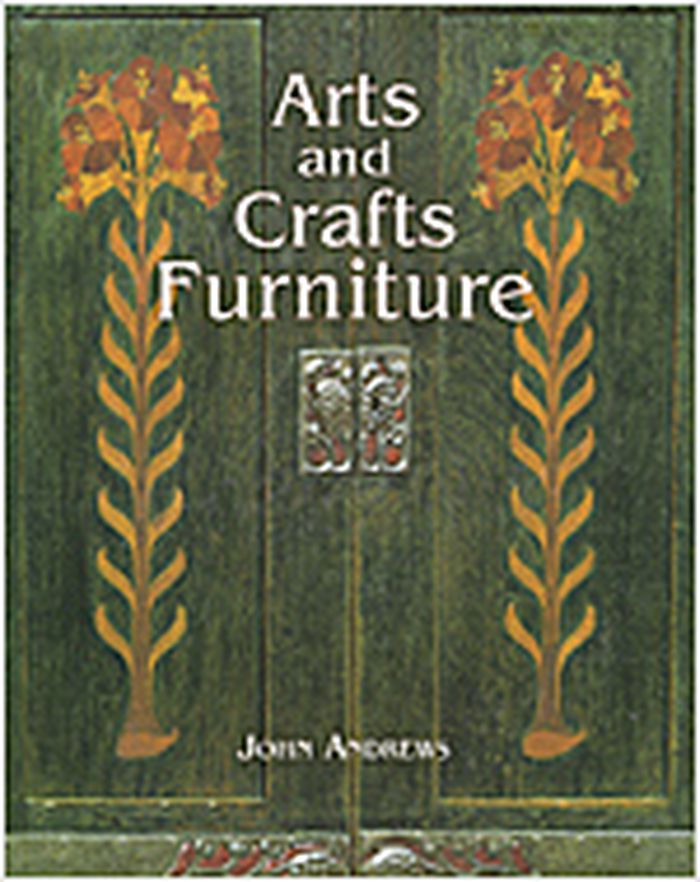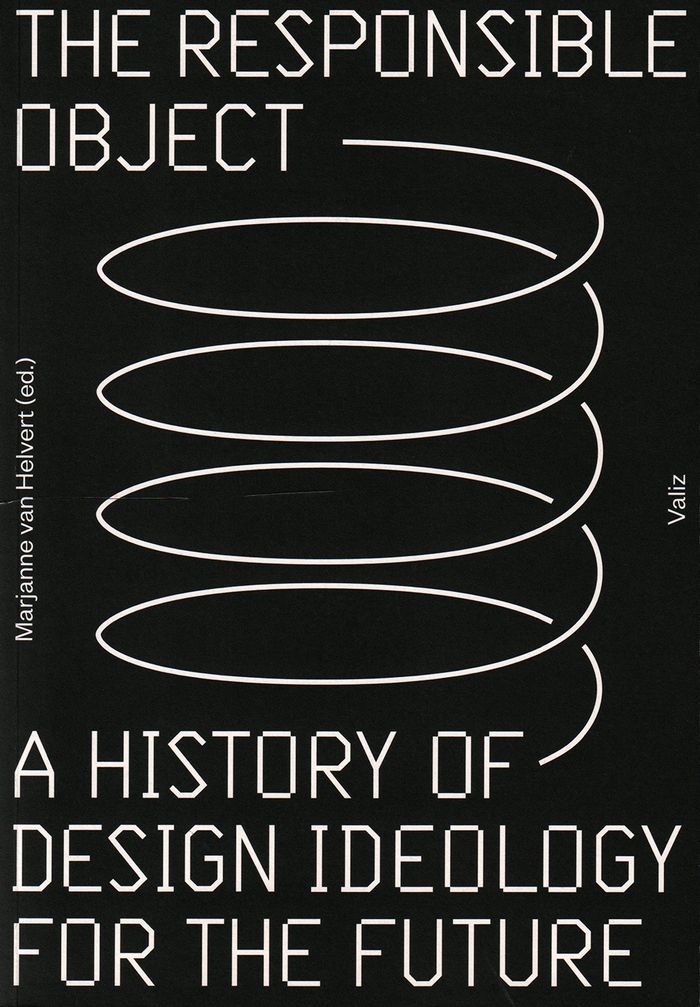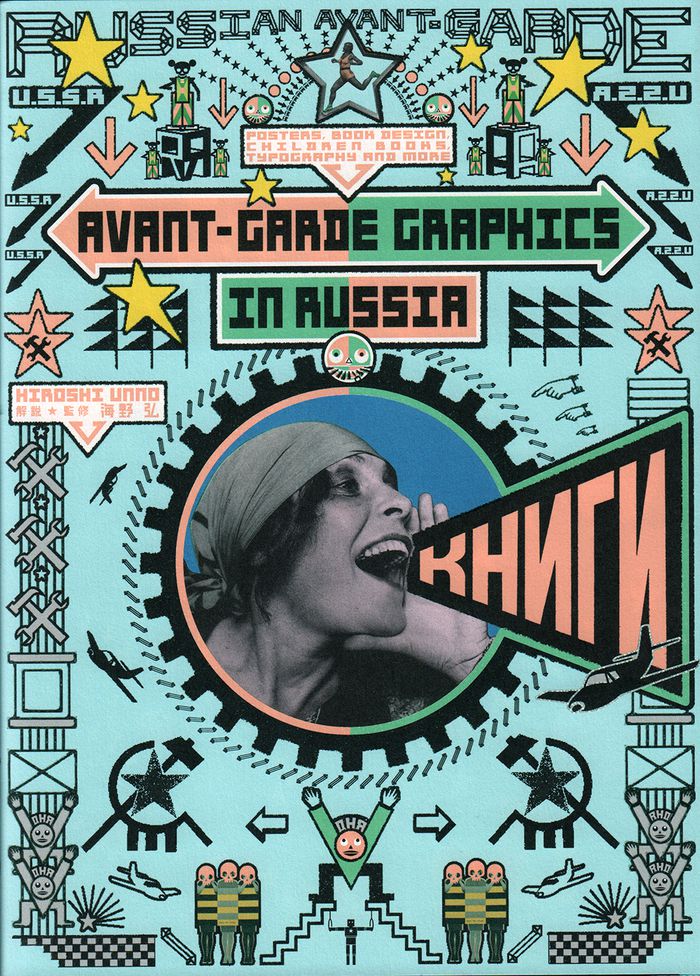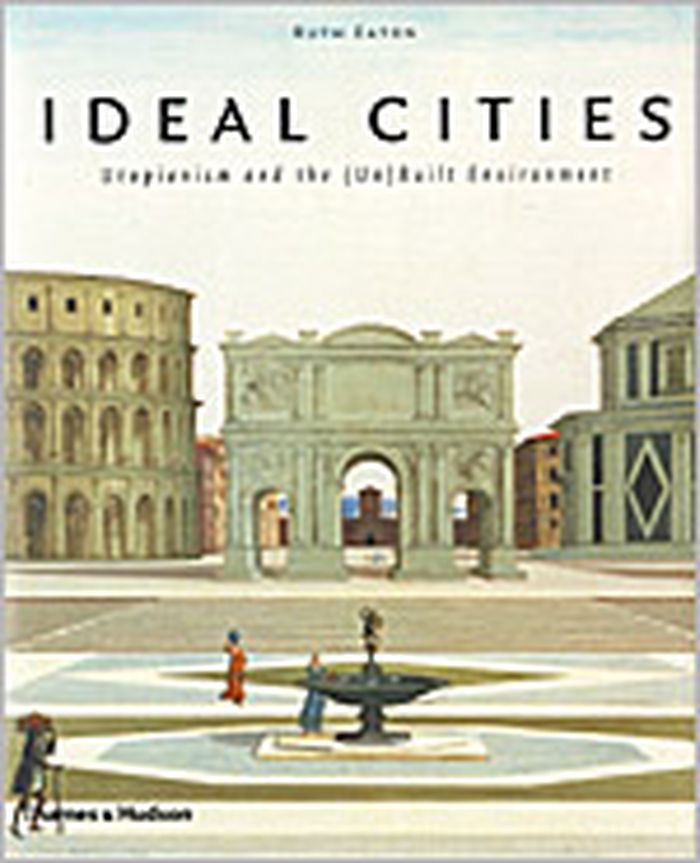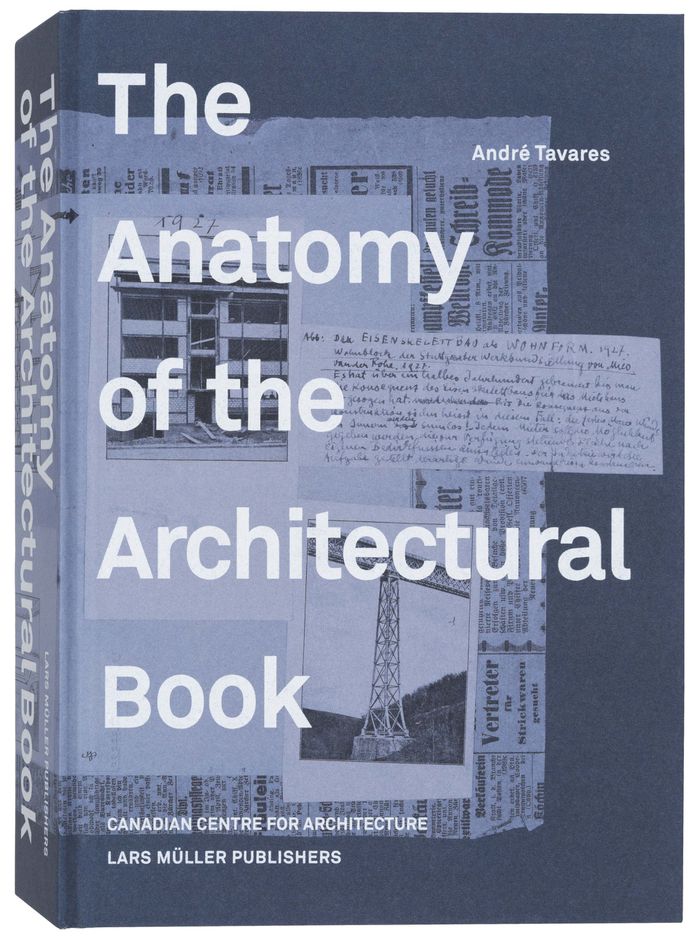$32.95
(available to order)
Summary:
One fateful rainy day, a bored kid asks his grandfather “what in the world is graphic design?” Starting with that innocent question, this activity book takes its readers on a charmingly illustrated and cleverly revealing whirlwind tour through this creative discipline’s milestone developments, personalities, and technologies. With its engaging design, humorous narratives,(...)
A history of graphic design for rainy days: 1776-1994
Actions:
Price:
$32.95
(available to order)
Summary:
One fateful rainy day, a bored kid asks his grandfather “what in the world is graphic design?” Starting with that innocent question, this activity book takes its readers on a charmingly illustrated and cleverly revealing whirlwind tour through this creative discipline’s milestone developments, personalities, and technologies. With its engaging design, humorous narratives, and fun-filled exercises, it offers an entertaining look at the many aspects of graphic design—from typography’s humble beginnings to the internet-based font distribution of today; from styles including art nouveau, Dada, Bauhaus, and psychedelic to innovators such as William Morris, Jan Tschichold, Saul Bass, and David Carson.
Graphic Design and Typography
books
$29.99
(available to order)
Summary:
At the turn of the last century, the Arts and Crafts movement transformed not only how objects looked but also how people looked at objects. It provided a framework for essential issues that are still debated today: the conflict between standardization and individuality, the question of whether a one-of-a-kind handcrafted object is superior to a mass-produced one, and(...)
The arts & craft movement in Europe & America : design for the modern world
Actions:
Price:
$29.99
(available to order)
Summary:
At the turn of the last century, the Arts and Crafts movement transformed not only how objects looked but also how people looked at objects. It provided a framework for essential issues that are still debated today: the conflict between standardization and individuality, the question of whether a one-of-a-kind handcrafted object is superior to a mass-produced one, and the problem of defining what kind of design most benefits society. The book features masterworks by the best-known designers of the period, such as William Morris, M. H. Baillie Scott, Henry Van de Velde, Peter Behrens, Josef Hoffmann, Eliel Saarinen, Greene and Greene, and Frank Lloyd Wright, as well as lesser-known examples that have never been displayed together before.
books
December 2004, New York
sale books
Studies in design
$74.00
(available to order)
Summary:
In Christopher Dresser's own words, "I have prepared this Work with the hope of assisting to bring about a better style of decorations for our houses. My book is intended to help the decorator and to enable those who live in decorated houses to judge, to an extent, the merit of the ornament around them." Indeed, in this reprint of the classic "Studies in Design", the(...)
Studies in design
Actions:
Price:
$74.00
(available to order)
Summary:
In Christopher Dresser's own words, "I have prepared this Work with the hope of assisting to bring about a better style of decorations for our houses. My book is intended to help the decorator and to enable those who live in decorated houses to judge, to an extent, the merit of the ornament around them." Indeed, in this reprint of the classic "Studies in Design", the timeless designs and wisdom of Christopher Dresser are reintroduced. Originally published in 1875, "Studies in Design" features Dresser's exquisite design and classic theories that have enduring appeal. Dresser's designs, which later influenced other artisans such as William Morris and Charles Tiffany, reveal exotic influences from such locations as Egypt, Japan, China, India, and Morocco.
Interior Design
$27.95
(available to order)
Summary:
Kristin Ross’s new work on the thought and culture of the Communard uprising of 1871 resonates with the motivations and actions of contemporary protest, which has found its most powerful expression in the reclamation of public space. Today’s concerns —internationalism, education, the future of labor, the status of art, and ecological theory and practice — frame and inform(...)
Communal luxury : the political imaginary of the Paris commune
Actions:
Price:
$27.95
(available to order)
Summary:
Kristin Ross’s new work on the thought and culture of the Communard uprising of 1871 resonates with the motivations and actions of contemporary protest, which has found its most powerful expression in the reclamation of public space. Today’s concerns —internationalism, education, the future of labor, the status of art, and ecological theory and practice — frame and inform her carefully researched restaging of the words and actions of individual Communards. This analysis of an event and its centrifugal effects brings to life the workers in Paris who became revolutionaries, the significance they attributed to their struggle, and the elaboration and continuation of their thought in the encounters that transpired between the insurrection’s survivors and supporters like Marx, Kropotkin, and William Morris.
Critical Theory
$52.50
(available to order)
Summary:
"The Origin of Things" is an international survey of the history of design from William Morris to Rem Koolhaas. Giving examples of around thirty case studies, it illuminates the process through which designers transform their often-groundbreaking ideas into products. In the context of this book, drawings, cardboard models stuck together with tape and ultramodern computer(...)
The origin of things : sketches, models, prototypes
Actions:
Price:
$52.50
(available to order)
Summary:
"The Origin of Things" is an international survey of the history of design from William Morris to Rem Koolhaas. Giving examples of around thirty case studies, it illuminates the process through which designers transform their often-groundbreaking ideas into products. In the context of this book, drawings, cardboard models stuck together with tape and ultramodern computer animations are more significant than the finished products. The more historical examples are by Theodor Bogler, H.P. Berlage, Frank Lloyd Wright and Gerrit Rietveld. Dutch design is represented by Wim Gilles, Kho Liang Ie, Aart Roelandt, Hella Jongerius, Marcel Wanders and Dick van Hoff. There are international highlights from the oeuvres of Richard Buckminster Fuller, Verner Panton, Poul Henningsen, Tapio Wirkkala, Mario Bellini, Michele de Lucchi, James Dyson, Jasper Morrison, Marc Newson and Konstantin Grcic.
Interior Design
Arts and crafts furniture
$99.50
(available to order)
Summary:
This is a fully illustrated history of the Arts and Crafts movement covering : the influence of Ruskin, Pugin, Talbert, Eastlake and G.E. Street; the founding of William Morris & Co. in the 1860s until its demise in the early twentieth century; the fruition of the Movement from 1880 to 1910 including the Guilds, the major personalities and their attitude to Art Nouveau;(...)
Arts and crafts furniture
Actions:
Price:
$99.50
(available to order)
Summary:
This is a fully illustrated history of the Arts and Crafts movement covering : the influence of Ruskin, Pugin, Talbert, Eastlake and G.E. Street; the founding of William Morris & Co. in the 1860s until its demise in the early twentieth century; the fruition of the Movement from 1880 to 1910 including the Guilds, the major personalities and their attitude to Art Nouveau; the aftermath into the 1920s and the rise of Modernism The Arts and Crafts Movement (1860-1920)changed the way designers think about furniture. All of the main leaders of the movement are covered. Illustrations show examples of museum quality pieces: the typical production of the Guilds, the Cotswold School, the Glasgow designers, Heal, Liberty and the major commercial companies including Gordon Russell. The principal American followers are also included. Each section details the furniture of the architects and designers involved.
Interior Design
$39.50
(available to order)
Summary:
Today, we live in an economic system that revolves around producing and consuming objects made of plastic and metal, electronics, synthetic textiles and other things that do not decompose within a foreseeable amount of time. We start to review the role of these objects in a series of challenges that lie ahead of us. In the design discipline, sustainability and social(...)
The responsible object; a history of the design ideology for the future
Actions:
Price:
$39.50
(available to order)
Summary:
Today, we live in an economic system that revolves around producing and consuming objects made of plastic and metal, electronics, synthetic textiles and other things that do not decompose within a foreseeable amount of time. We start to review the role of these objects in a series of challenges that lie ahead of us. In the design discipline, sustainability and social responsibility have become prolific epithets, generating new products, materials, and technologies, designed to change the course of our future. The intrinsic design ideologies are often not new, but form a fundamental part of design history, reappearing throughout the previous centuries. This book presents a history of socially committed design strategies within the western design tradition, from William Morris to Victor Papanek, and from VKhUTEMAS to FabLab. A critical resource for designers, students, cultural critics, and anyone interested in building a sustainable future.
Design Theory
$52.95
(available to order)
Summary:
This title is a definitive graphic art collection of Russian avant-garde. Contents are widely various in the fields such as Editorial Design, Book Design, Children Books, Typography, Pattern Graphics, Poster Creation, Fashion and Textiles and so on. In addition, energetic and Dynamic works are to be shown in a stylish layout at every turn of the page with mixture of(...)
Avant-garde graphics in Russia: posters, book design, children's books and more
Actions:
Price:
$52.95
(available to order)
Summary:
This title is a definitive graphic art collection of Russian avant-garde. Contents are widely various in the fields such as Editorial Design, Book Design, Children Books, Typography, Pattern Graphics, Poster Creation, Fashion and Textiles and so on. In addition, energetic and Dynamic works are to be shown in a stylish layout at every turn of the page with mixture of sophisticated design by Reiko Harajo, a renowned book designer who is well known for her gorgeous book design of past PIE titles: George Barbier, William Morris and Harry Clarke. About 300 works in total are shown in this title accompanied by some columns, which introduce the Russian printing technology, famous graphic designers, illustrators and typographers. This would be the very best treasured book for designers, especially with a keen interest in Russian Avant-Garde. All titles of art works as well as some columns are available in English.
Graphic Design and Typography
$90.00
(available to order)
Summary:
This vast panorama spans more than two millennia of Western attempts to invent the perfect city, cradle of the ideal society. Embracing not only architecture and town planning but also art, literature, philosophy, and politics, the book takes us through the imaginary environments of a wide variety of fascinating and often controversial movements and figures, including(...)
Ideal cities : utopianism and the (un)built environment
Actions:
Price:
$90.00
(available to order)
Summary:
This vast panorama spans more than two millennia of Western attempts to invent the perfect city, cradle of the ideal society. Embracing not only architecture and town planning but also art, literature, philosophy, and politics, the book takes us through the imaginary environments of a wide variety of fascinating and often controversial movements and figures, including Plato, Filarete, Leonardo da Vinci, Thomas More, Thomas Jefferson, Claude-Nicolas Ledoux, Charles Fourier, Etienne Cabet, Robert Owen, William Morris, Ebenezer Howard, Bruno Taut, Le Corbusier, Frank Lloyd Wright, the European Situationalists, the Japanese Metabolists, Archigram, Superstudio, and many more. The ideal cities in this richly illustrated book exist for the most part in the domain of ideas. Ruth Eaton explores the ability of ideal cities to stimulate reflection and change, and she suggests under what conditions they might continue to exercise their vital function in relation to the urban environment of the future. The book is generously illustrated with 300 imagess, 250 in colour.
Urban Theory
$49.00
(available to order)
Summary:
The Anatomy of the Architectural Book examines the relationships between book culture and building culture, making visible the axes along which architectural knowledge circulates through books into buildings and back. Using five conceptual tools—texture, surface, rhythm, structure, and scale—Tavares analyzes the material qualities of a wide range of books in order to(...)
The anatomy of the architectural book
Actions:
Price:
$49.00
(available to order)
Summary:
The Anatomy of the Architectural Book examines the relationships between book culture and building culture, making visible the axes along which architectural knowledge circulates through books into buildings and back. Using five conceptual tools—texture, surface, rhythm, structure, and scale—Tavares analyzes the material qualities of a wide range of books in order to assess these dynamics and intersections. This investigation confronts us with the rise of the industrialized book, and thus of the editor as an important intermediary between the author and the printer, as well as with the configuration of the book as a unique visual device (with the designer taking part in a progressively more complex chain of decision-making). Richly illustrated with samples from the CCA library, the volume discusses work by authors including William Morris, Gottfried Semper, El Lissitzky, Le Corbusier, and Frank Lloyd Wright, among others. A large portion of the research for the book was undertaken while Tavares was a Visiting Scholar at the CCA. It is co-published in English by Lars Müller Publishers and in Portuguese by Dafne Editora.
